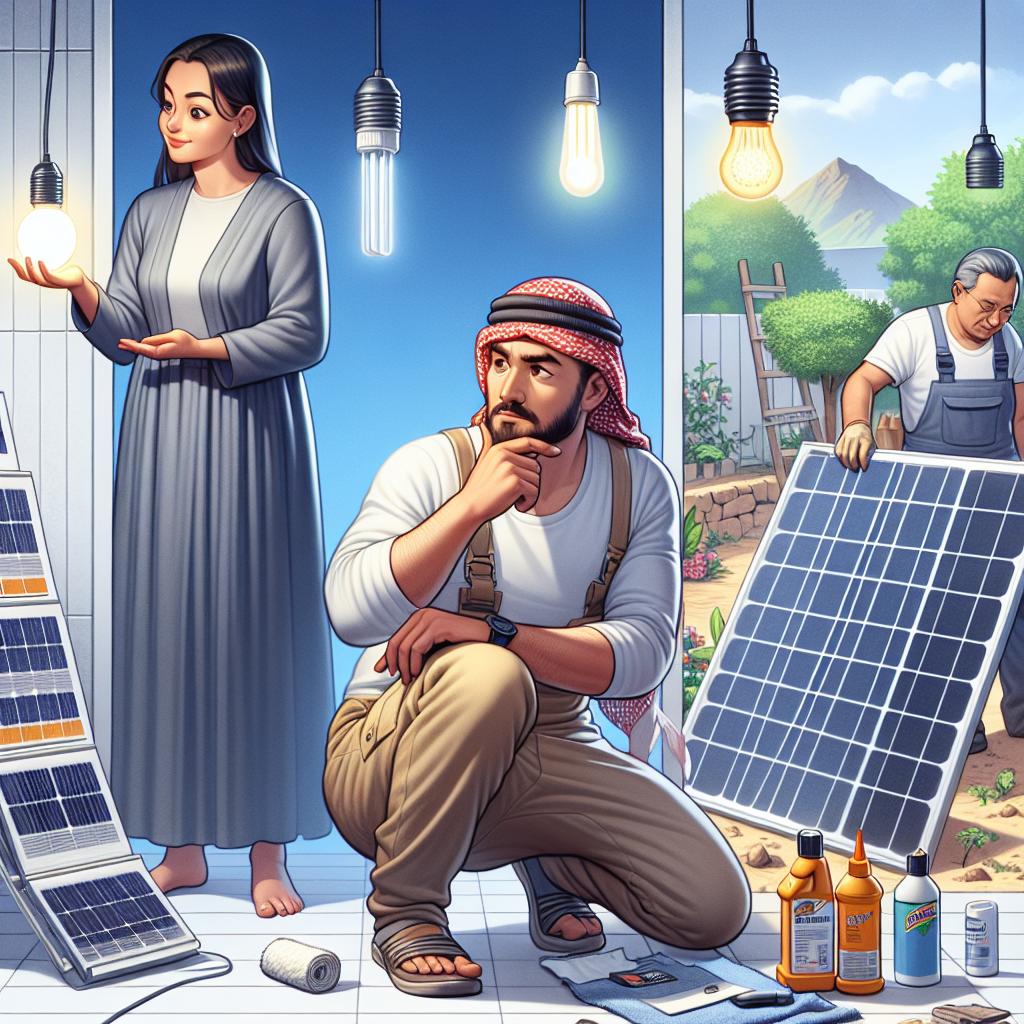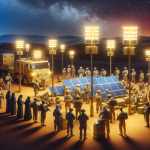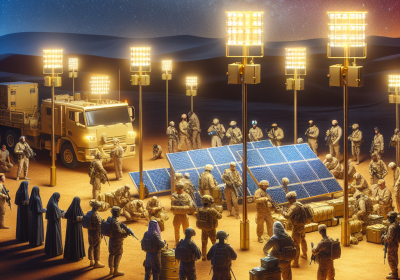Choosing, Installing, and Maintaining Temporary Solar Lighting
-
Table of Contents
Choosing, installing, and maintaining temporary solar lighting involves several key considerations to ensure optimal performance and longevity. When selecting solar lighting, it is crucial to assess the specific needs of the area, such as the required brightness, duration of illumination, and environmental conditions. Installation should be carried out in locations that receive ample sunlight, with solar panels positioned to maximize exposure. Proper installation also includes securing fixtures to withstand weather conditions and ensuring electrical connections are safe and efficient. Maintenance involves regular cleaning of solar panels to remove dirt and debris, checking battery health, and inspecting for any damage or wear. By carefully choosing, correctly installing, and diligently maintaining temporary solar lighting, users can achieve reliable and sustainable illumination for various applications.
Choosing The Right Temporary Solar Lighting For Your Needs
When selecting temporary solar lighting, it is essential to consider several factors to ensure that the chosen solution meets your specific needs. The first step in this process involves understanding the purpose and location of the lighting. For instance, if the lighting is intended for a construction site, it must be robust and capable of withstanding harsh environmental conditions. Conversely, for an event or a garden party, aesthetics and ease of installation might take precedence. Therefore, identifying the primary use case is crucial in narrowing down the options.
Once the purpose is clear, the next consideration is the brightness and coverage area of the solar lights. Lumens, a measure of light output, are a key specification to examine. Higher lumens indicate brighter light, which is necessary for larger or more demanding areas. Additionally, the coverage area, often specified in square feet or meters, should align with the space that needs illumination. It is advisable to choose lights with adjustable settings, allowing for flexibility in different scenarios.
Another critical factor is the battery life and charging time of the solar lights. Since these lights rely on solar energy, the efficiency of the solar panels and the capacity of the batteries are paramount. High-quality solar panels will charge the batteries more quickly and efficiently, even in less-than-ideal weather conditions. Similarly, batteries with higher capacity will provide longer illumination periods, which is particularly important for locations with limited sunlight. It is beneficial to look for lights with built-in energy-saving features, such as motion sensors or dimming capabilities, to extend battery life.
Durability and weather resistance are also significant considerations, especially for outdoor applications. Solar lights should be constructed from materials that can withstand exposure to the elements, including rain, wind, and extreme temperatures. Look for products with high IP (Ingress Protection) ratings, which indicate the level of protection against dust and water. A rating of IP65 or higher is generally recommended for outdoor use.
Ease of installation and portability are additional factors that can influence your decision. Temporary solar lighting should be straightforward to set up and dismantle, without requiring specialized tools or expertise. Lightweight and compact designs are advantageous for portability, making it easier to move the lights to different locations as needed. Some models come with mounting options, such as stakes, hooks, or adhesive pads, providing versatility in installation.
Cost is inevitably a consideration, but it should be weighed against the features and quality of the solar lights. While it might be tempting to opt for the least expensive option, investing in higher-quality lights can result in better performance and longevity, ultimately offering better value for money. It is also worth considering the warranty and customer support provided by the manufacturer, as these can be indicators of product reliability and the company’s confidence in their product.
In conclusion, choosing the right temporary solar lighting involves a careful evaluation of several factors, including purpose, brightness, battery life, durability, ease of installation, and cost. By thoroughly assessing these aspects, you can select a solution that not only meets your immediate needs but also provides reliable and efficient illumination over time.
Step-By-Step Guide To Installing Temporary Solar Lighting

Choosing, installing, and maintaining temporary solar lighting can be a straightforward process if approached methodically. The first step in this journey is selecting the appropriate solar lighting for your needs. Temporary solar lighting is available in various forms, including string lights, floodlights, and pathway lights. When choosing the right type, consider the specific requirements of your space. For instance, string lights may be ideal for decorative purposes, while floodlights are better suited for security and illumination of larger areas. Additionally, evaluate the brightness, battery life, and weather resistance of the solar lights to ensure they meet your expectations.
Once you have selected the appropriate solar lighting, the next step is installation. Begin by identifying the optimal locations for your lights. It is crucial to place the solar panels in areas that receive ample sunlight throughout the day, as this will ensure the batteries are adequately charged. Before installation, clean the surfaces where the lights and panels will be mounted to ensure a secure attachment. For ground-mounted lights, such as pathway lights, simply insert the stakes into the ground at the desired locations. For wall-mounted or hanging lights, use the provided hardware to secure the lights in place. Ensure that the solar panels are angled correctly to maximize sun exposure.
After installing the lights, it is essential to test them to confirm they are functioning correctly. Most solar lights have an on/off switch or a mode button that allows you to select different lighting settings. Turn on the lights and observe their performance after sunset. If the lights do not turn on, check the connections and ensure the solar panels are receiving sufficient sunlight. It may take a day or two for the batteries to fully charge, so be patient if the lights do not perform optimally immediately after installation.
Maintaining temporary solar lighting is relatively simple but crucial for ensuring longevity and performance. Regularly clean the solar panels to remove dust, dirt, and debris that can obstruct sunlight and reduce charging efficiency. Use a soft cloth and mild soapy water to clean the panels, and avoid using abrasive materials that could scratch the surface. Additionally, inspect the lights and connections periodically to ensure they remain secure and free from damage. If you notice any issues, such as flickering lights or reduced brightness, troubleshoot the problem by checking the battery connections and ensuring the solar panels are not obstructed.
In colder climates, it is essential to take extra precautions during the winter months. Snow and ice can accumulate on the solar panels, significantly reducing their efficiency. Regularly clear any snow or ice from the panels to maintain optimal performance. If you anticipate prolonged periods of inclement weather, consider temporarily storing the lights indoors to protect them from harsh conditions.
In conclusion, choosing, installing, and maintaining temporary solar lighting involves a series of thoughtful steps that ensure optimal performance and longevity. By selecting the right type of lighting, installing it correctly, and performing regular maintenance, you can enjoy the benefits of solar lighting with minimal hassle. This sustainable and cost-effective solution not only enhances the aesthetics and security of your space but also contributes to environmental conservation by harnessing the power of the sun.
Best Practices For Maintaining Temporary Solar Lighting Systems
Choosing, Installing, and Maintaining Temporary Solar Lighting
When it comes to selecting temporary solar lighting systems, several factors must be considered to ensure optimal performance and longevity. Initially, it is crucial to evaluate the specific lighting needs of the area in question. This involves assessing the size of the space, the duration of illumination required, and the intensity of light necessary to achieve the desired effect. By understanding these parameters, one can make an informed decision regarding the type and number of solar lighting units needed.
Once the appropriate solar lighting system has been chosen, the next step is installation. Proper installation is vital to maximize the efficiency and effectiveness of the lighting system. Begin by selecting a location that receives ample sunlight throughout the day, as this will ensure that the solar panels can charge the batteries fully. It is also important to position the lights in such a way that they provide even coverage of the area, avoiding shadows and dark spots. Additionally, ensure that the solar panels are angled correctly to capture the maximum amount of sunlight, which may vary depending on the geographical location and time of year.
After installation, regular maintenance is essential to keep the temporary solar lighting system functioning optimally. One of the most critical aspects of maintenance is keeping the solar panels clean. Dust, dirt, and debris can accumulate on the panels, reducing their efficiency and, consequently, the amount of energy they can generate. Cleaning the panels periodically with a soft cloth and mild detergent can help maintain their performance. Furthermore, it is advisable to inspect the panels for any signs of damage, such as cracks or scratches, and address any issues promptly to prevent further deterioration.
In addition to maintaining the solar panels, it is also important to monitor the batteries that store the energy generated by the panels. Over time, batteries can lose their capacity to hold a charge, which can result in reduced lighting performance. Regularly checking the battery levels and replacing them when necessary can help ensure that the lighting system remains reliable. It is also beneficial to use high-quality batteries designed for solar applications, as these are typically more durable and efficient.
Another key aspect of maintaining temporary solar lighting systems is ensuring that the light fixtures themselves are in good working order. This involves checking the bulbs or LEDs for any signs of wear or damage and replacing them as needed. Additionally, it is important to inspect the wiring and connections to ensure that they are secure and free from corrosion. Loose or corroded connections can lead to intermittent or complete failure of the lighting system, so addressing these issues promptly is essential.
Finally, it is worth considering the environmental factors that can impact the performance of temporary solar lighting systems. For instance, extreme weather conditions, such as heavy rain, snow, or high winds, can affect the stability and functionality of the lights. Taking measures to protect the lighting system from such conditions, such as using weather-resistant fixtures and securing the lights firmly in place, can help prolong their lifespan.
In conclusion, choosing, installing, and maintaining temporary solar lighting systems requires careful consideration and attention to detail. By selecting the appropriate lighting units, ensuring proper installation, and performing regular maintenance, one can achieve a reliable and efficient lighting solution that meets the needs of the area while minimizing environmental impact. Through diligent upkeep and proactive measures, temporary solar lighting systems can provide sustainable and effective illumination for various applications.
Read more about Temporary Solar Lighting
- Introduction to Temporary Solar Lighting
- Advantages of Temporary Solar Lighting
- Temporary Solar Lighting for Events and Festivals
- Temporary Solar Lighting for Construction Sites
- Temporary Solar Lighting for Outdoor Recreation
- Temporary Solar Lighting for Disaster Relief
- Temporary Solar Lighting for Parking Lots and Garages
- Temporary Solar Lighting for Road and Highway Construction
- Temporary Solar Lighting for Military and Security Operations









